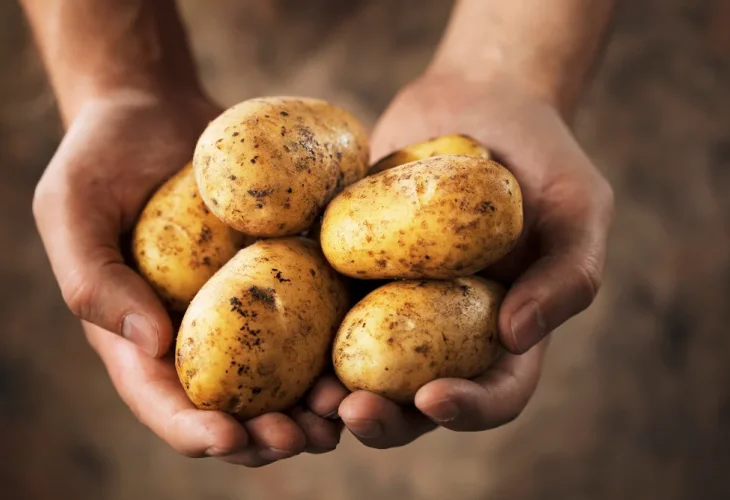Potatoes: When Your Favorite Side Dish Turns Dangerous
Potatoes might be a staple in your kitchen, but they can turn harmful if you're not careful. Discover when potatoes start producing toxins and how to avoid it.

Potatoes are one of the most beloved and easy-to-use foods, but there are some important rules to follow to avoid health risks. A green color or sprouts on a potato can be a warning sign for consumers – so what's the issue, and do you need to throw them out immediately?<\/p>
What Makes Potatoes Turn Green?<\/strong><\/p> Potatoes don't turn green due to spoilage; it's caused by exposure to light. When a potato is exposed to light, it begins to produce chlorophyll – the green pigment found in many plants, which is harmless on its own. However, the problem is that chlorophyll production is accompanied by the production of a substance called solanine, which we'll explain further.<\/p> Why Do Potatoes Sprout?<\/strong><\/p> Sprouts on potatoes begin to appear when they are stored too long or in unfavorable conditions, like warm temperatures or lots of light. Sprouts are essentially the start of a new growth cycle, as the potato is a tuber trying to produce another plant. The sprouts themselves may contain higher levels of solanine, a toxic substance that can be dangerous if consumed in large amounts.<\/p> What is Solanine and Why Is It a Problem?<\/strong><\/p> Solanine is a toxic chemical naturally found in potatoes and other members of the nightshade family. When a potato starts to rot or is exposed to light for too long, its solanine levels rise, making it problematic for consumption.<\/p> Consuming high amounts of solanine can cause unpleasant symptoms like stomach aches, nausea, vomiting, and headaches. In very severe cases, solanine can also cause neurological issues.<\/p> How Do You Know a Potato Is Unsafe to Eat?<\/strong><\/p> So What Can You Do?<\/strong><\/p> Potatoes turning green isn't just about taste or color – it's about your health. The next time you see a green potato, remember these tips to ensure your meal is safe and healthy.<\/p>

